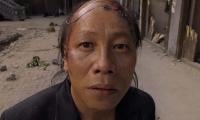Languages: mine and ours
Diversity is a complex phenomenon and the term itself connotes many things. It could be either perceptive or objective. Although it appears to have positive connotations, the term could lead to various forms of stratification among various groups.
Whatever its implications are, diversity is fairly common to society. Ingrid Piller, the Australian sociolinguist, writes in her book ‘Linguistic Diversity and Social Justice’ that: “diversity is a feature of all human societies and to the extent that it is possible to speak of ‘diverse individuals’ or ‘diverse groups’ everyone is equally ‘diverse”.
When we are confronted with the term ‘linguistic diversity’, two different images arise in our minds. We can, on the one hand, be linguistically diverse in the manner in which we speak a language while on the other we, as human beings, have multiple languages attached to our socialisation. In this globalised world, more and more people experience linguistic diversity on a daily basis. It is often billed as ‘subjective diversity’ as it is more a matter of perception.
Subjective diversity is, of course, on the rise while objective linguistic diversity – which is, more precisely, the number of languages spoken in the world – is on the decline. This decrease can be attributed to the extinction of ‘peripheral languages’. These are the clusters of languages that are at the bottom of the ‘language pyramid’ – an analogy created by Abram de Swaan for the global language system in his book ‘Words of the World’.
Swaan placed 98 percent of the world’s languages at the bottom of the pyramid and categorised them as “the languages of conversation and narration rather than reading and writing, of memory and remembrance rather than record”. His pyramid further categorises the remaining two percent languages as “central languages”, “super-central languages” and “hyper-central languages”.
According to this categorisation, the central language in Pakistan is Urdu while English falls into the category of a hyper-central language. The remaining 70 languages are ‘peripheral languages’, with varying degrees of endangerment. Many of these languages, especially the ‘far-peripheral’ ones, are facing immense challenges.
For the last 10 years, however, there has been a growing realisation that these languages need to be protected and promoted. A number of private initiatives are being taken by NGOs and the people to preserve these languages. Organising events such as the Pakistan Mother Languages and Literature Festival is among these measures. This event is organised by the volunteers of the Indus Cultural Forum in collaboration with the National Institute of Folk and Traditional Heritage – popularly known as Lok Virsa – and a few civil society organisations in Islamabad. Such national-level gatherings have been held for three consecutive years since 2015.
Although all languages that are spoken in Pakistan are featured at these events, many languages that are in danger of extinction are presented more empathically. Panel discussions are organised on various issues pertaining to language and culture where writers, activists and researchers present insights on the documentation, preservation and promotion of their respective languages. In addition to these talks, experts in linguistics and education are also invited to speak to participants about the significance given to these languages in the education sector and the role of mother tongue-based early childhood education.
Language discrimination and the policies and practices on the part of the government also form the basis of most panel discussions. The launch ceremonies of books that are published in various regional languages are an important feature of these festivals. Books stalls are also set up for visitors at Lok Virsa where books on languages and culture are sold.
Such festivals are usually organised on International Mother Language Day, which is observed on February 21. These events
-
 Piers Morgan In Hospital: Here's Why
Piers Morgan In Hospital: Here's Why -
 IPhone 18 Pro Leaked: New Design Reveals Radical Corner Camera Layout
IPhone 18 Pro Leaked: New Design Reveals Radical Corner Camera Layout -
 Kung Fu Legend Siu-Lung Leung Passes Away At 77
Kung Fu Legend Siu-Lung Leung Passes Away At 77 -
 Kim Kardashian To Remove Ex Kanye West From Her Kids' Names
Kim Kardashian To Remove Ex Kanye West From Her Kids' Names -
 Queens Mother Arrested After Abducting Child From Court-ordered Visit
Queens Mother Arrested After Abducting Child From Court-ordered Visit -
 Sarah Ferguson Ready To ‘spread Her Wings’ After Separating From ‘disgraced’ Andrew
Sarah Ferguson Ready To ‘spread Her Wings’ After Separating From ‘disgraced’ Andrew -
 Finn Wolfhard Shares How Industry Views Him Post 'Stranger Things'
Finn Wolfhard Shares How Industry Views Him Post 'Stranger Things' -
 Dylan O'Brien Gets Nostalgic After Reunion With Old Friend
Dylan O'Brien Gets Nostalgic After Reunion With Old Friend -
 UK Doctors Warn Screen Time Is Harming Children’s Health
UK Doctors Warn Screen Time Is Harming Children’s Health -
 Meghan Markle To Get Police Protection In UK If Travelling With Archie, Lilibet
Meghan Markle To Get Police Protection In UK If Travelling With Archie, Lilibet -
 Spencer Pratt Expresses Hope For Taylor Swift, Travis Kelce's Wedding Invite
Spencer Pratt Expresses Hope For Taylor Swift, Travis Kelce's Wedding Invite -
 Evan Peters Makes Unexpected Confession About 'American Horror Story' Season 13
Evan Peters Makes Unexpected Confession About 'American Horror Story' Season 13 -
 Kentucky Grandmother Arrested After Toddlers With Broken Skulls, Ribs
Kentucky Grandmother Arrested After Toddlers With Broken Skulls, Ribs -
 European Space Agency Hit By Cyberattack, Hundreds Of GBs Data Leaked
European Space Agency Hit By Cyberattack, Hundreds Of GBs Data Leaked -
 Elon Musk’s XAI Launches World’s First Gigawatt AI Supercluster To Rival OpenAI And Anthropic
Elon Musk’s XAI Launches World’s First Gigawatt AI Supercluster To Rival OpenAI And Anthropic -
 Google Adds On-device AI Scam Detection To Chrome
Google Adds On-device AI Scam Detection To Chrome



